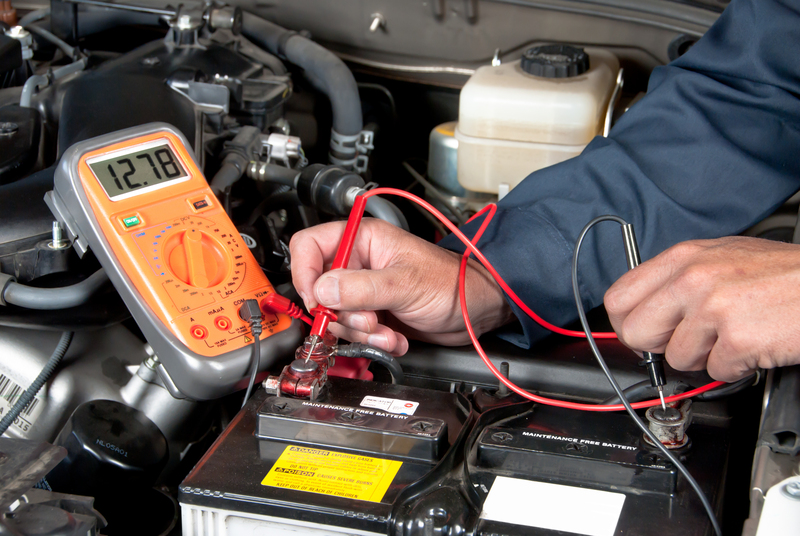Exploring the Risks of DIY Piano Moving and Professional Solutions
Posted on 26/05/2025
Exploring the Risks of DIY Piano Moving and Professional Solutions
Piano moving is a task that goes far beyond simply lifting heavy furniture. Whether you own an upright, grand, or baby grand, the process of relocating such a delicate and expensive instrument is fraught with potential hazards. Many people consider a DIY approach to save on costs, but few realize the significant risks involved. Let's dive into the perils of using a DIY method for piano moving and explore why hiring professional piano movers is a safer, smarter solution.

Why Piano Moving is Challenging
At first glance, a piano may seem like any other large household item. However, pianos are unique for several reasons:
- Weight: Most pianos weigh between 300 to 1,200 pounds or even more.
- Shape: Their awkward shapes and delicate components make them tricky to handle.
- Mechanics: Pianos contain thousands of moving parts, making them fragile and sensitive to impact or misalignment.
- Finish: Even minor scratches or bumps can damage their expensive finish.
All these factors make the risk of injury or damage significant during amateur piano moves.
The True Cost of DIY Piano Moving
It's tempting to believe that moving a piano yourself will be cheaper. However, unforeseen expenses can quickly add up if something goes wrong. Here's how attempting to move a piano on your own may actually cost more over time.
- Repair Costs: Internal damage or broken components can run into the hundreds or thousands of dollars to fix.
- Medical Expenses: Back strains, crushed fingers, and other injuries are common during improper moving attempts.
- Property Damage: Scratched floors, dented walls, and broken staircases are typical results of unprofessional moves.
- Piano Tuning: Even a perfectly executed move often leaves a piano in desperate need of tuning--a skill most DIY movers lack.
Common Risks and Hazards of DIY Piano Moving
Physical Injury Risks
- Back Injuries: The immense weight of pianos makes back sprains or slipped discs a common threat during lifting or carrying.
- Crushed Fingers and Toes: Mishandling or sudden shifts can lead to fingers and toes being crushed under the instrument's weight.
- Slips and Falls: Navigating stairs or tight corners increases the likelihood of slips that could cause serious harm.
- Muscle Strains: Maneuvering a piano improperly puts extra strain on muscles, increasing the risk of strains or even fractures.
Damage to the Piano
- Internal Mechanism Damage: Sudden jolts, bumps, or even slight drops may unseat hammers, break strings, or damage pedals.
- Finish Scratches: Pianos are often finished with high-quality wood or lacquer, which can be easily scratched by straps, belts or improper handling.
- Structural Warping: Incorrect lifting techniques can warp the piano's frame, affecting the sound quality and resale value.
Property Damage
- Dented Walls and Floors: Moving a piano without proper equipment can lead to significant property damage in the form of scratches, dents, or gouges.
- Stairwells and Hallways: Tight turns and small spaces are prone to chipping, cracking, and damage from accidental bumps.
- Door Frames: The large size and heavy weight make squeezing through doors risky for both the instrument and your home.
Dangers Unique to Grand and Baby Grand Pianos
Grand and baby grand pianos add an extra layer of complexity to the moving experience. They must be partially disassembled and handled with precise technique to avoid:
- Misaligning or damaging the legs, pedals, or lid.
- Improperly securing the body, leading to catastrophic drops.
- Bending or snapping the pedal lyre.
Challenges of Moving an Upright Piano
Upright pianos, while less sprawling than grands, are still heavy and require careful planning. Their height and awkward center of gravity often make them unwieldy, especially in stairways or through narrow doors.
Professional Piano Movers: What Makes Them Different?
Given the inherent risks, it's no surprise that professional piano moving services have become the preferred option for most owners. What sets professionals apart from the average DIY mover?
Specialized Knowledge and Experience
- Professional movers receive training on how to disassemble, secure, carry, and reassemble all types of pianos.
- They understand the unique vulnerabilities of different models and take steps to avoid them.
- Experienced teams have moved hundreds of pianos up and down stairs, through tight spaces, and even in tricky outdoor conditions.
Proper Equipment and Techniques
- Piano Skids and Boards: These provide a stable base for transport, greatly reducing the risk of tipping or shifting.
- Protective Padding: High-quality blankets and padding shield the finish from scratches and dings.
- Moving Straps and Dollies: Specialized lifting and rolling equipment distribute weight safely and evenly.
- Cushioned Trucks: Moving vehicles equipped to absorb shocks, preventing any jarring bumps.
Insurance and Liability
- Insurance Coverage: Reputable movers carry insurance that protects both your piano and your property during the move.
- Liability: If an accident occurs, you're not financially responsible for the damages or injuries sustained by the moving team.
Benefits of Professional Piano Moving Services
Here's why hiring a professional piano mover is not just safer but also a better value:
- Safety: Protect yourself, your loved ones, and your piano from harm with properly executed moves.
- Peace of Mind: Professionals plan each step, removing uncertainties and hazards from the equation.
- Cost-Effectiveness: Avoid the hidden costs of DIY mishaps that can exceed moving fees several times over.
- Timeliness: Experienced teams work efficiently, minimizing disruption to your day.
- Resale Value: Ensuring your piano remains in perfect condition preserves both its sentimental and market value.
How to Choose the Right Professional Piano Movers
Not every moving company is equipped to handle pianos. When searching for reliable help, consider the following:
- Experience: Ask about their track record with different types of piano moves.
- Equipment: Verify that they use proper skids, blankets, and moving trucks tailored for piano transport.
- Insurance: Ensure your piano and property are fully covered.
- Reviews: Check testimonials and online reviews for evidence of professionalism and care.
- Transparent Pricing: Request a detailed quote that clearly outlines all fees and potential extra charges.
Steps Involved in Professional Piano Moving
- Initial Assessment: The moving team assesses the type, size, and location of your piano, along with entry and exit routes.
- Preparation: They disassemble the necessary parts (such as legs and pedals), wrap components in protective blankets, and secure moving boards in place.
- Transport: Using specialized dollies and staff coordination, the piano is maneuvered safely, carefully down stairs or through doorways, and loaded into a cushioned vehicle.
- Delivery and Setup: Once at the new location, the process is reversed: the piano is reassembled, positioned, and checked for any damage or tuning needs.
What to Expect After Professional Piano Transport
- Even with expert handling, a piano may need a fine tuning to adjust to its new environment.
- Professionals can recommend tuning experts or provide this service themselves.

Piano Moving: DIY vs Professional - Weighing Your Options
| DIY Piano Moving | Professional Solutions |
|---|---|
|
|
Frequently Asked Questions about Piano Moving
- Can I move a piano within my house by myself?
Even seemingly simple moves within a single home can go wrong--risking injury, instrument damage, or both. Always consult an expert before proceeding. - Do all moving companies transport pianos?
No, only certain companies have the tools, training, and insurance required for safe piano relocation. Look for those specializing in piano moving. - How much does professional piano moving cost?
Fees vary based on piano type, move distance, stairs, and complexity. However, they are small compared to the potential costs of DIY accidents.
Final Thoughts: Secure Your Piano's Future
DIY piano moving may seem economical, but the risks to your instrument, property, and personal safety are considerable and often hidden. By choosing a professional piano moving service, you invest not only in your piano's continued beauty and playability, but also in genuine peace of mind. The right professionals have the expertise, tools, and liability coverage to complete the job smoothly and safely.
Whether you're relocating across town or simply moving your instrument from one room to another, trust experts who understand the intricacies of piano moving to protect your valuable investment.
Are You Planning a Piano Move?
Before you decide on the DIY route, carefully consider all possible outcomes. Remember: When it comes to piano moving, the professional solution is almost always the safest and most cost-effective choice.
For continued reading, check our guides on piano care, tuning after moving, and tips for maintaining your instrument in its new home.



